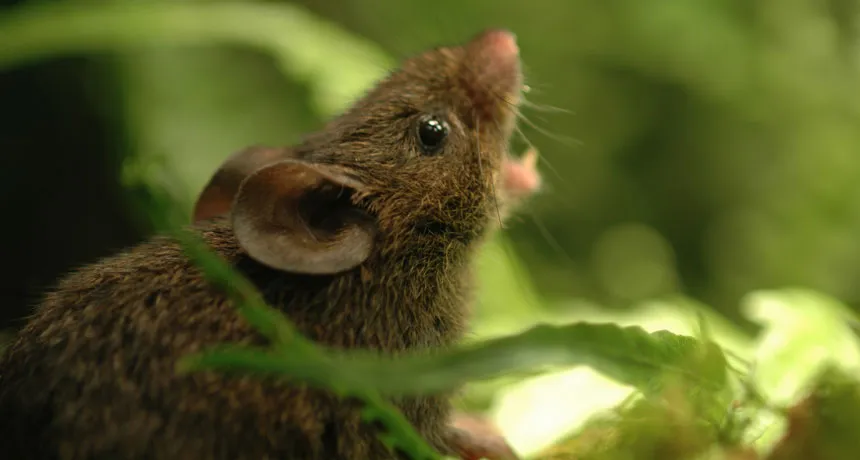How singing mice belt out duets
Songs of musical rodents may offer insights into human conversation

NICE PIPES In Costa Rica, this Alston’s singing mouse (Scotinomys teguina) stands up and serenades the forest, perhaps negotiating its territory with other males.
B. Pasch
- More than 2 years ago
In the understory of Central American cloud forests, musical mice trill songs to one another. Now a study of the charismatic creatures reveals how their brains orchestrate these rapid-fire duets.
The results, published in the March 1 Science, show that the brains of singing mice split up the musical work. One brain system directs the patterns of notes that make up songs, while another coordinates duets with another mouse, which are carried out with split-second precision.
The study suggests that “a quirky animal from the cloud forest of Costa Rica could give us a brand new insight,” into the rapid give-and-take in people’s conversations, says study coauthor Michael Long, a neuroscientist at New York University’s School of Medicine.
Quirks abound in these mice, known as Alston’s singing mice (Scotinomys teguina). Like famous singers with extreme green room demands, these mice are “kind of divas,” Long says, requiring larger terrariums, exercise equipment and a very special diet.
In the lab, standard mouse chow doesn’t cut it; instead, singing mice feast on fresh meal worm, dry cat food and fresh fruits and berries, says Bret Pasch. The biologist at Northern Arizona University in Flagstaff has studied these singing mice for years but wasn’t involved in this study.
The mice are also, of course, loud. “They’re very vocal,” particularly in the confines of a lab, Pasch says. “Once an animal calls, it’s like a symphony that goes off,” with repeating calls. In the wild, these duets are thought to attract mates and stake out territory.
One brain system is thought to control the contents of the songs. But another part — the orofacial motor cortex, or OMC — orchestrates the split-second timing needed for the mouse duets, Long and his colleagues found.
When the team cooled the mice’s OMC, slowing those nerve cells’ activity, songs grew longer, suggesting that the brain region normally controls song timing. And when the researchers used a drug to silence the OMC, the mice had trouble singing duets in response to another mouse’s call.
“In a very clear and convincing way, they show that this structure is involved in this behavior,” says neurobiologist Steffen Hage of the University of Tübingen in Germany who wrote an accompanying commentary in Science.
The singing mice’s OMC may not align exactly with the brain areas used to pace human chatter. Still, the results may ultimately yield clues to human conversations, which often proceed at similarly fast clips. That pursuit might ultimately lead to therapies for disorders that affect communication, such as strokes and autism, Long says.
The results also highlight the benefits of studying a variety of animals in creative ways. “As we put microphones up to more species, we find that a lot of them are using their voices,” Pasch says.






